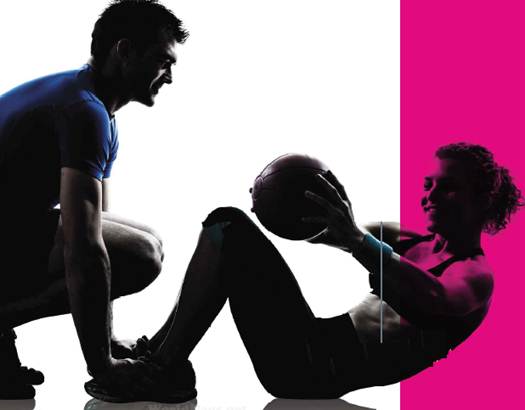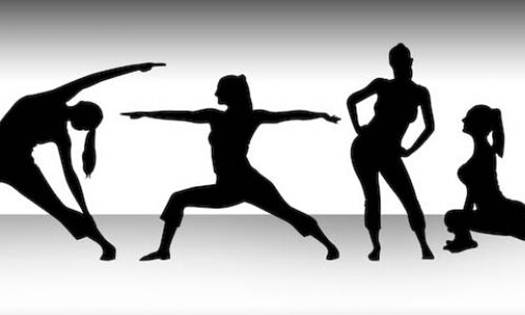Looking for someone to whip you in to
shape? Follow our guide to recruiting the perfect PT
It’s a fact: personal training is more
popular than ever. A recent survey by Premier Training International found that
78 per cent of fitness graduates quit a previous job for a fresh start in the
booming $3.81 billion fitness industry, and the demand for their skills is
growing.

‘The
trainer-client partnership is like all other relationships: you need to get
along as individuals’
The good news is that this means you can
demand more from your personal trainer – we’re talking on-trend workouts, the
latest equipment and specific skills that cater to your needs. The bad news is
that it can be difficult to find the right instructor for you in this vast sea
of newly qualified fitness training partner? We’ve made it easy with our
ultimate PT checklist...
Pick a location
Where do you like to work out? Maybe you
like to exercise indoors with others, or maybe you prefer to escape the hustle
and bustle. It’s important you know the answer and choose an instructor who
offers a workout you’ll stick to. ‘You could go to a gym and meet a trainer
with all the equipment,’ explains Steve Harrison, regional manager with Premier
Training International, ‘or you could find a trainer who will work in your
home.’ Or, search for a trainer who’ll get you fit in the great outdoors.
Shop around
How much time and money can you commit?
Training fees can be steep, but there are ways to cut costs. Gyms often give
members several free or discounted sessions and some employers offer similar
incentive schemes. Got a friend who’s keen? Team up. Many trainers will
instruct two or three people together, allowing you to split the cost. How do
you find these trainers? ‘Word of mouth is best,’ says celebrity instructor
Ricardo Macedo of www.r-fitnes.co.uk,
‘but check their references before paying for a block of sessions.’
Check their paperwork
Would you take health advice from a doctor
who hasn’t passed medical exams? No way – and neither should you heed exercise
advice from a trainer who hasn’t got the right paperwork.
‘There are PTs out there who have done
little or no training and set themselves up as instructors,’ says Jean-Ann
Marnoch from the Register of Exercise Professionals (REPs). ‘This could mean
the exercise they prescribe is ineffective or unsafe,’ Trainers recognised by
REPs have the qualifications and skills to put together an effective workout.
Check your instructor’s website or portfolio for a level three or higher REPs
certification. Or, find a V instructor in your area at www.exerciseregister.org.

Exercise your needs
Next question: What are your workout goals?
As well as its three levels, the REPs accreditation system has many specific
categories, such as weight-loss management or personal trainers specialise in
these niche areas. ‘Search for an instructor with the right skills for you,’
tips Jean-An. ‘If you want to go to a group exercise class, check the
instructor has the ‘Exercise to Music’ qualification. If you’re pregnant, look
for a trainer with the ‘Pre and Post Natal’ skills qualification.’ There’s a
comprehensive list of 25 professional exercise categories, ranging from Pilates
and yoga to youth fitness or sports conditioning, so be clear of your goals and
choose someone with the unique expertise you need.
Be inspired
While it isn’t essential that your trainer
has bulging biceps and a toned tummy, do pick someone that you admire. ‘A good
personal trainer will inspire you to meet your goals,’ agrees Ricardo. ‘Once
you know an instructor is registered, the trainer-client partnership is like
all other relationships – you need to get along as individuals.’ You trainer
should be friendly and knowledgeable, but don’t panic if she can’t lift as much
as you. After all, very few elite athletes are trained by people who can match
them skill for skill in competition! The important thing is that your
instructor has experience, passion and sets a good example. So, if your fitness
guru likes to party until the early hours, or rocks up munching a chocolate
bar, alarm bells should ring.
Make sure they measure up
You’ve found a qualified trainer and
arranged your first meeting – what next? ‘A competent trainer about your
medical history and try to find out as much about your past injuries, health,
lifestyle, diet, targets and availability as possible,’ says Ricardo. ‘And
expect your trainer to take measurements! A trainer who doesn’t note down statistical
data in the initial consultation will not be able to monitor your progress.’
Your PT should also be able to tell you which muscles you’re working and why,
and how this relates to your long and short-term goals. ‘Giving you unrealistic
goals that you can’t reach is a classic sign of a lack of understanding,’ says
Jean-Ann. Go for someone who keeps it real.